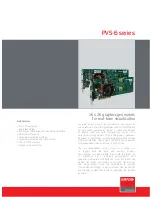
Chapter 5
Calibration
©
National Instruments Corporation
5-3
Voltage Output Calibration
There are two adjustments to make for the voltage outputs: offset and gain.
You should perform offset adjustment first. It is a good idea to calibrate
twice, because a large change in the voltage gain channel value could
impact the accuracy of the offset calibration.
Offset Adjustment
To calibrate the offset, set one of the voltage output channels to 0 V and
measure it with a precise voltmeter. Then, change the voltage offset
channel value until the output is zero. The voltage you write to the voltage
offset channel will be close to zero, and increasing it will lower the voltage
you measure.
Gain Adjustment
To calibrate the gain, set the voltage output channel to a voltage near
full-scale, such as +10 V. Then, change the voltage gain channel value until
the output that you measure is as close as possible to the voltage that you
wrote to the output channel. The voltage you write to the voltage gain
channel will be close to +10 V, and increasing it will lower the magnitude
of the voltage you measure.
You can also calibrate using several output channels, instead of just one, by
averaging channels together. Do this by writing the values to all the
channels you wish to average and using a resistive averaging circuit to
average the outputs. This will reduce the sensitivity of the calibration
process to interchannel mismatch—the slight differences in the output
characteristics of the channels—by averaging out these differences.
Current Output Calibration for the 6704
There are two adjustments to make for the current outputs: offset and gain.
You should perform offset adjustment first. It is a good idea to calibrate
twice, because a large change in the current gain channel value could
impact the accuracy of the offset calibration.
Offset Adjustment
To calibrate the offset, set one of the current output channels to 100 µA and
measure it with a precise ammeter. Then, change the current offset channel
value until the output is as close as possible to 100 µA. The current you
















































